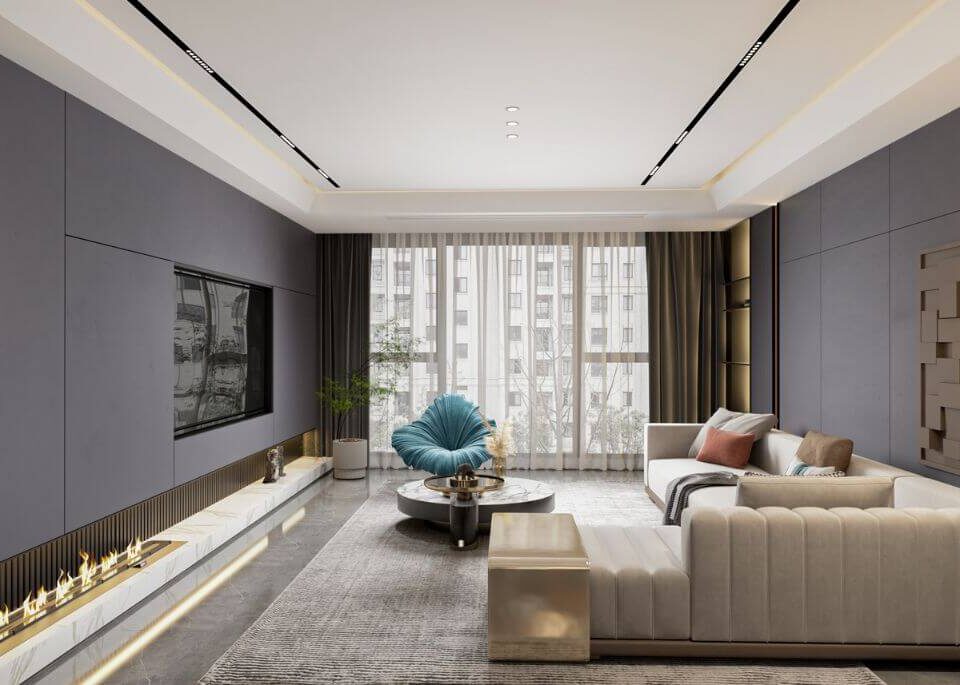
Steering Towards Your Ideal Home Makeover
March 4, 2024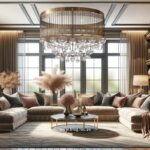
Crafting Elegance on a Budget
March 6, 2024Revitalize Your Space: Modernizing Homes with a 90s Aesthetic
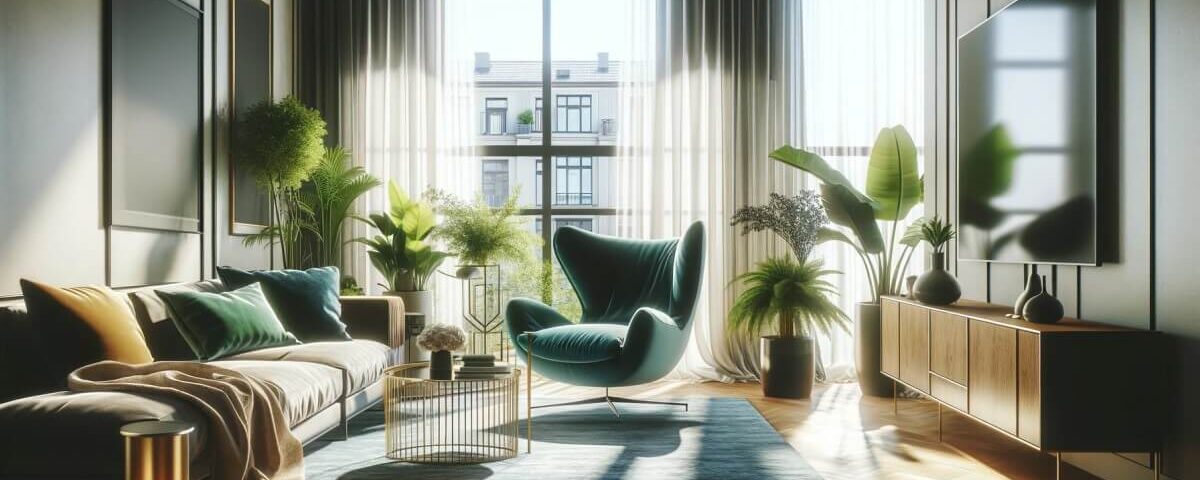
The 90s marked a significant period in interior design, marked by its distinctive styles such as comprehensive carpeting, vivid color palettes, and widespread use of oak in furniture and architectural details. These features, along with a fondness for patterned wallpapers and floral motifs, defined the era’s domestic aesthetic. At the time, these designs brought a sense of warmth and comfort, but the realm of interior design has since shifted towards minimalism, eco-friendliness, and the integration of smart home technologies. This evolution reflects a broader change in how we perceive and utilize our living spaces, driven by new lifestyle trends, personal tastes, and technological advancements. If signs of the 90s still prominently feature in your home, it may be the perfect moment for an update. This guide delves into five major indicators that your home’s design is rooted in the past, providing insights on how to rejuvenate your space with modern flair while preserving its unique essence.
Table of Contents
Predominance of Wall-to-Wall Carpeting
During the 90s, wall-to-wall carpeting was a common sight in homes, offering a sense of warmth and luxury underfoot. However, the contemporary preference has shifted towards hardwood, laminate, and sustainable options like bamboo or recycled materials. These modern choices not only enhance the visual appeal of a space but also simplify cleaning and maintenance, and are better for air quality. Transitioning to these new flooring types can significantly alter the perception of your home’s interior, making spaces feel more expansive and inviting. When considering a flooring update, think about the room’s purpose, the look you aim to achieve, and environmental sustainability.
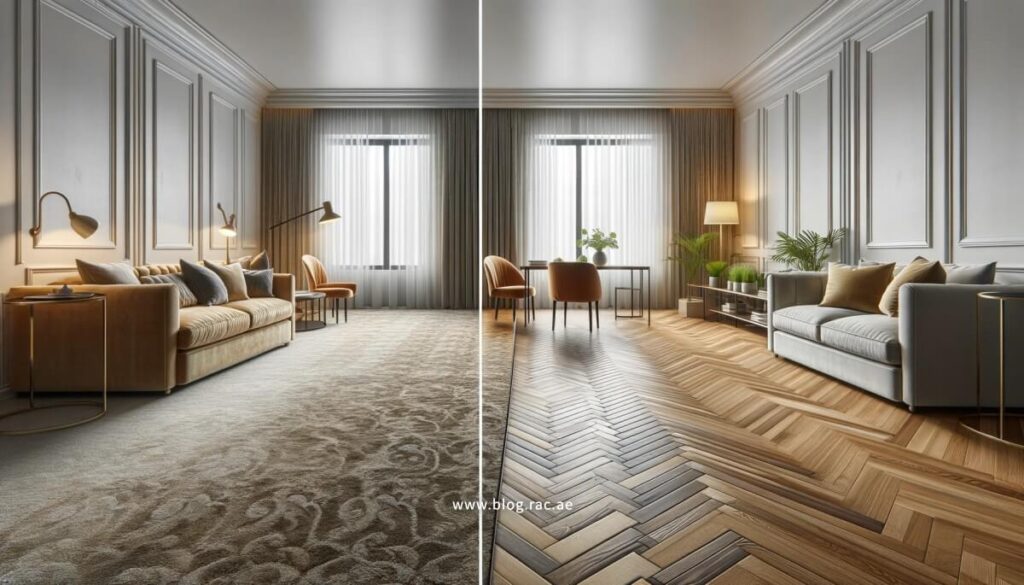
Dated Color Schemes
The 90s were known for their deep, comforting hues such as rich burgundies, forest greens, and soft roses. While these shades can still add warmth to a home, integrating them with contemporary styles prevents the decor from looking outdated. Modern design leans towards a diverse color spectrum, embracing everything from calming neutrals to bold, eye-catching colors. The annual reveal of Pantone’s Color of the Year now serves as a major inspiration for home decorators. Refreshing your home with these new color trends can be as straightforward as a new coat of paint or as detailed as updating furnishings and accessories, aiming to harmonize colors with the natural lighting to set the desired ambiance.
Bulky and Uniform Furniture Sets
The tendency in the 90s to purchase matching furniture sets resulted in spaces that felt heavy and lacked individuality. Contemporary interior design celebrates minimalism and the mixing of different textures, materials, and design eras to create a more eclectic and personalized space. Modernizing your home might involve moving away from these matching sets in favor of selecting unique, statement-making pieces. Blending vintage finds with contemporary designs can inject personality and depth into your living areas.
Elaborate Drapery and Window Dressings
Nineties homes often featured opulent drapery, complete with intricate valances and swags, which could make spaces feel crowded and dim by blocking natural light. Today, window treatments prioritize simplicity, functionality, and the maximization of daylight. Updating to lighter fabrics, streamlined blinds, or simple shades can radically transform a room’s atmosphere, making it appear brighter and more airy. Additionally, for those embracing home automation, smart blinds can offer convenience and energy efficiency, adjusting automatically to your preferences and the time of day.
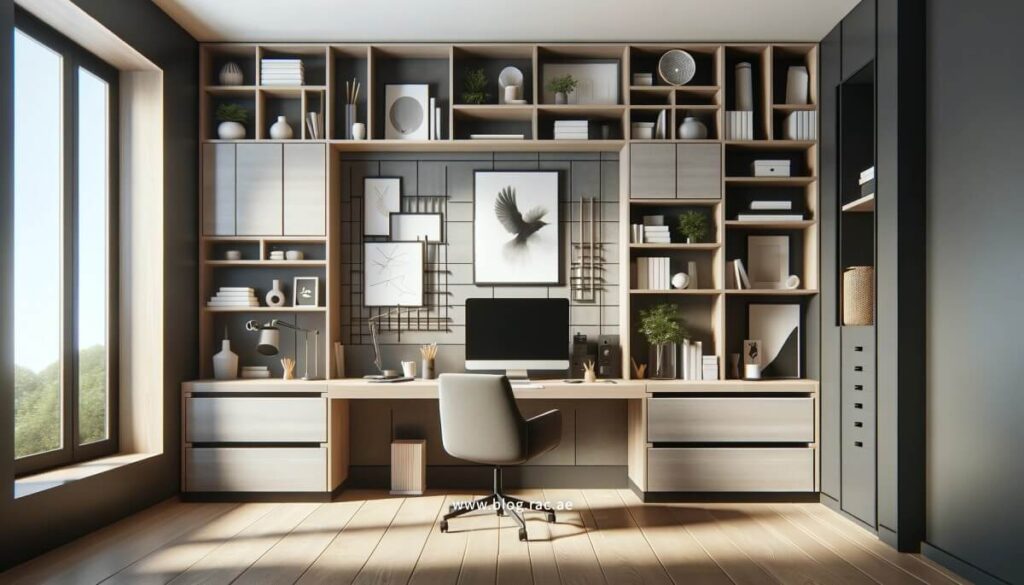
Cluttered Interiors and Inefficient Storage
A hallmark of the 90s was the display of various collectibles and personal memorabilia, which, while personalizing the space, often contributed to a cluttered look. The modern approach leans towards decluttering and the smart organization of belongings, utilizing built-in solutions, multifunctional furniture, and digital platforms to maintain tidy and organized living areas. Adopting these modern storage solutions can streamline your home environment, making it more adaptable and pleasant to live in.
Modernizing While Retaining Character
Revamping your home’s design doesn’t necessitate forsaking its unique characteristics. It’s about evolving your space to align with current design trends while keeping those personal elements that imbue it with character. This approach ensures that your home remains both contemporary and meaningful. Whether it’s through the preservation of a favorite piece of furniture or the integration of family heirlooms into new decor schemes, the aim is to create a living environment that reflects your personal style and accommodates modern living standards.
Key Takeaways: Modernizing Homes with a 90s Aesthetic
Revamping a home with a 90s aesthetic involves updating outdated elements like wall-to-wall carpeting, dated color schemes, bulky furniture sets, elaborate drapery, and cluttered interiors. Modern alternatives such as hardwood flooring, contemporary color trends, minimalist and eclectic furniture, streamlined window treatments, and smart storage solutions can significantly transform your space. Balancing modern updates with personal touches ensures your home remains unique and reflective of your style while embracing contemporary design trends.
Conclusion
If your home’s aesthetic is firmly anchored in the 90s, it’s probably time to consider a design overhaul. Identifying the signs of outdated decor is the first step towards cultivating a space that feels modern yet welcoming. Remember, refreshing your home’s design isn’t about erasing its history; it’s about enhancing its present appeal with thoughtful, modern choices. Embrace this opportunity for change and relish the transformation of your space into a reflection of current times and your unique taste.
We’re eager to hear about your experiences with home transformations! Share your stories with us or get in touch for tailored advice on refreshing your living space. Whether you’re eyeing a minor tweak or a complete renovation, the journey towards a revitalized home is as fulfilling as the destination.
FAQs
1. Why should I modernize my home from a 90s aesthetic?
Modernizing your home can enhance its visual appeal, improve functionality, and align it with contemporary design trends, making your space more comfortable and attractive.
2. What are the main signs that my home has a 90s aesthetic?
Key indicators include wall-to-wall carpeting, dated color schemes, bulky and uniform furniture sets, elaborate drapery, and cluttered interiors with inefficient storage.
3. How can I update my 90s-style carpeting?
Replacing wall-to-wall carpeting with hardwood, laminate, bamboo, or recycled materials can create a more modern look, improve air quality, and simplify cleaning.
4. What modern color schemes can replace my 90s palette?
Consider using calming neutrals, bold contemporary colors, or the latest Pantone Color of the Year to refresh your space and keep it looking current.
5. How can I modernize my bulky furniture sets?
Opt for minimalistic, eclectic designs by mixing different textures and materials, and choose unique statement pieces instead of matching sets.
6. What are modern alternatives to elaborate drapery?
Lighter fabrics, streamlined blinds, simple shades, and smart blinds can transform your space, maximizing natural light and improving energy efficiency.
7. How do I declutter my home’s interior?
Embrace smart storage solutions, multifunctional furniture, and digital organization platforms to create a tidy, adaptable living environment.
8. Can I modernize my home without losing its character?
Yes, by integrating personal elements like favorite furniture pieces or family heirlooms into your new decor, you can retain your home’s unique character while updating its design.
9. Why is hardwood flooring preferred over carpeting now?
Hardwood flooring is favored for its aesthetic appeal, ease of maintenance, and its ability to make spaces feel larger and more open.
10. How can new color trends improve my home’s ambiance?
Modern color trends, harmonized with natural lighting, can create desired moods, making your space more inviting and visually appealing.
11. What role does eco-friendly design play in modern interiors?
Eco-friendly designs incorporate sustainable materials and practices, promoting environmental health and creating healthier living spaces.
12. How can I integrate smart home technologies into my design?
Use smart blinds, automated lighting, and smart thermostats to enhance convenience, energy efficiency, and modernize your living environment.
13. What are the benefits of minimalist interior design?
Minimalist design reduces clutter, highlights essential elements, and creates a more peaceful, functional, and aesthetically pleasing space.
14. How do multifunctional furniture pieces help in modernizing a home?
Multifunctional furniture maximizes space usage, offers versatile solutions, and contributes to a clutter-free and efficient living area.
15. What’s a simple first step to start modernizing my home?
Begin with small changes like updating paint colors, replacing old drapery, or incorporating a few modern furniture pieces to gradually transform your space.

